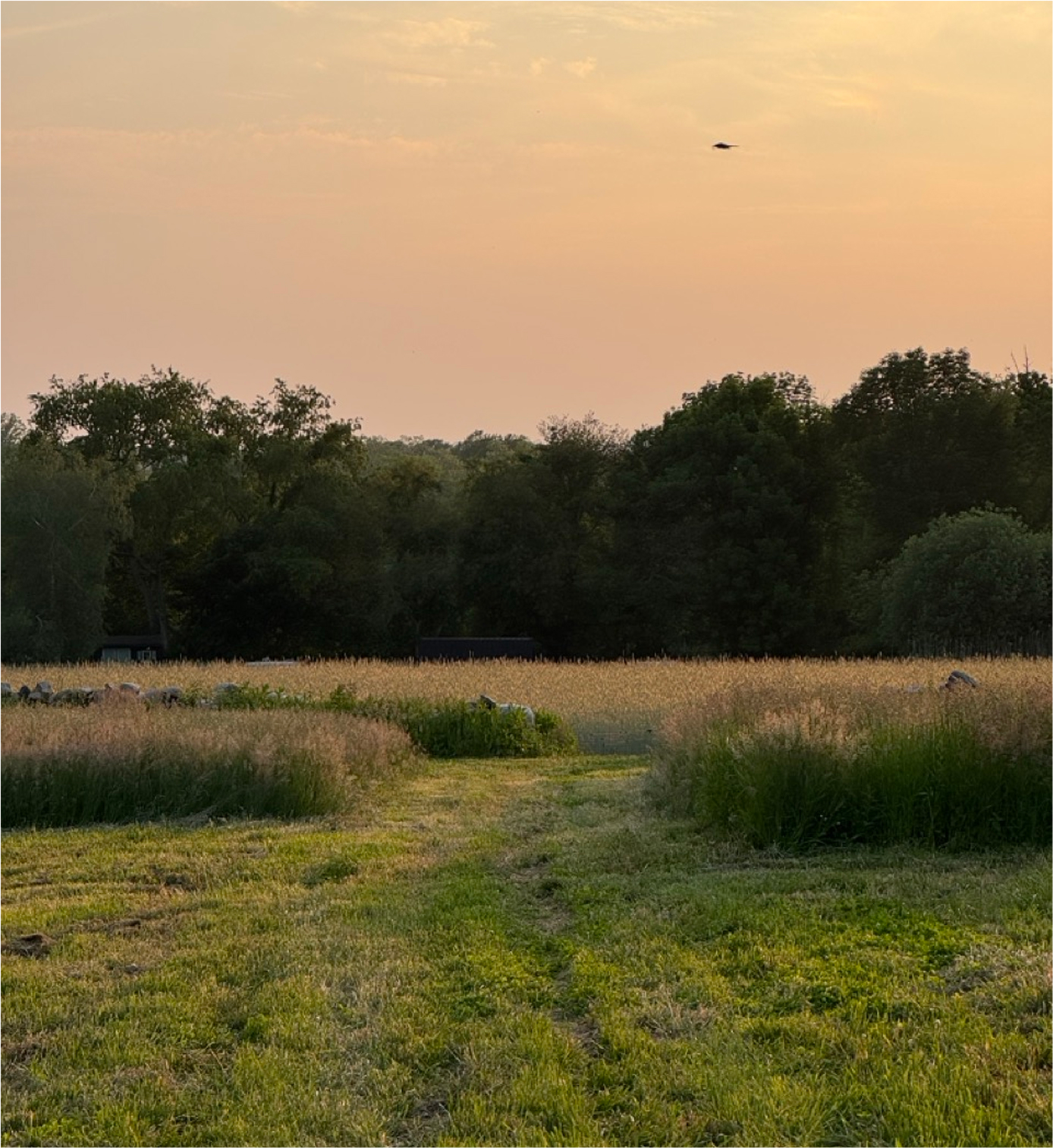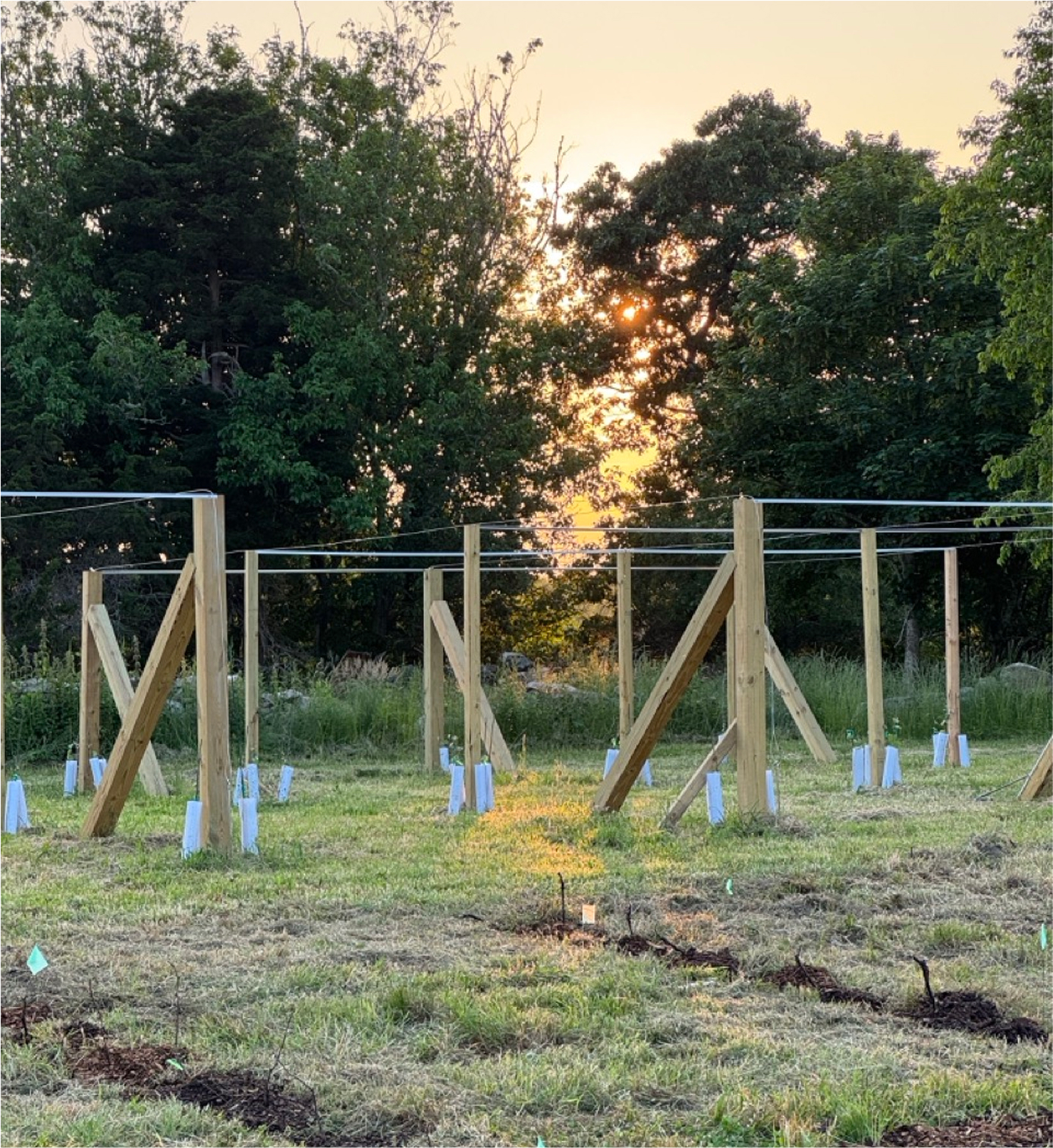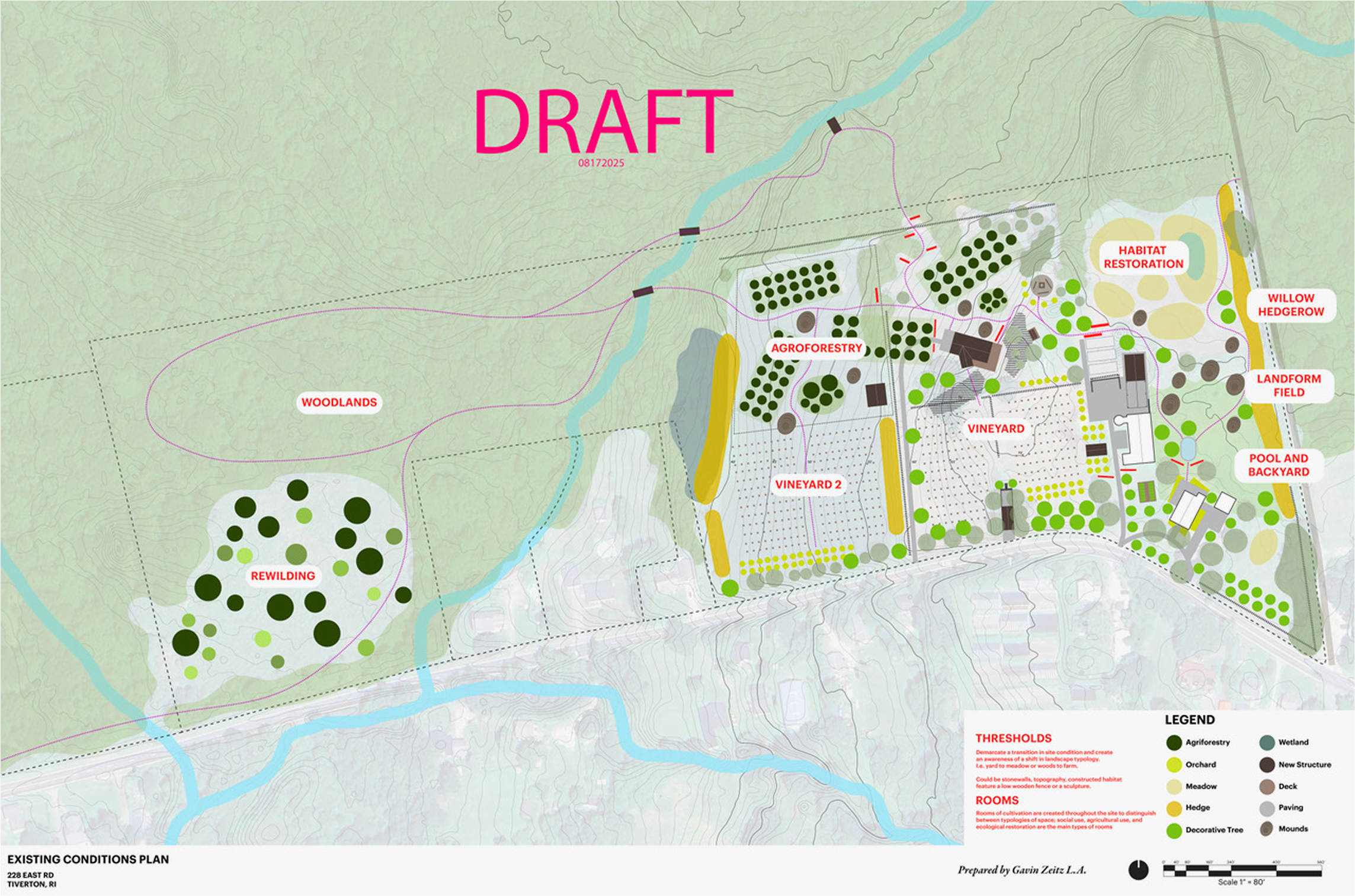Overhead is a coastal Rhode Island vineyard inspired by the Rías Baixas: Albariño on a high pergola so wind and light keep the fruit clean and cool. We aim to keep the ground living with native meadow, minimal till and an organic approach. In the future, we plan to add sheep under the vines and weave in hedgerows and silvopasture for shade, feed, habitat, and water control.
The goal is grapes grown for bright, saline, structured whites and skin contact wines with a clean, modern feel.


Just inland from the Sakonnet, the site has an ocean-tempered, breezy microclimate. A slight southwest tilt gives afternoon sun; summer sea breezes arrive from the south to southwest and blow consistently. It's often ~5 degrees cooler than Providence in the summer, and ~5 degrees warmer in the winter.
The soil is glacial till: mostly Newport, Stissing, and Pittstown silt loams with pockets of very stony ground and Canton–Charlton fine sandy loam on 3–15% slopes. Soils test slightly acid (pH ~5.8–6.1), fertile, with good soluble carbon. We plant vines on the stony, sloped units; keep the mucky/low spots as meadow and wetland buffer.
While searching for a reference point for a vineyard in RI we landed on Rías Baixas: a mild Atlantic maritime climate with fog and frequent rain and steady ocean air. South Shore RI isn't as wet, but the pattern is similar—moisture spread through the season, cool nights, quick shifts. Albariño evolved in that setting, with thick skins, firm acid, and clean aromatics when it gets airflow and measured light.
The Rías Baixas pergola (parra gallega) trains vines to a high, horizontal canopy, cordon height 1.8–2.2 m on 3×3 to 4×4 m grids. Cordons or long canes run across overhead wires; shoots hang downward, opening fruit to air and speedy drying, limiting downy, powdery, and botrytis.
The pergola is the practical and historical fit. Lifting fruit overhead keeps clusters off damp ground, lets wind move through, and helps leaves dry after fog and showers. It also spreads vigor on our fertile soils and fits well with our interest in regenerative approaches including grazing, cover cropping and small scale farming.
Albariño is the main grape we plan to develop the vineyard around. Small trial blocks (Itasca, Traminette, Cabernet Franc, Baco Noir, and others) help us learn canopy behavior, ripening windows, and disease pressure on this site. Grape vines are selected for suitability to climate and expected pressures, as well as market demand.
Year 1: 0.5 acre in, nursery row active for extras and replacements.
Year 2: ~2 acres with full pergola build and deer fence.
Year 3: ~4-5 acres total, finalize hedgerows and wind breaks, begin building processing building.
Later: Bring sheep in once trunks are set and guards are on.

